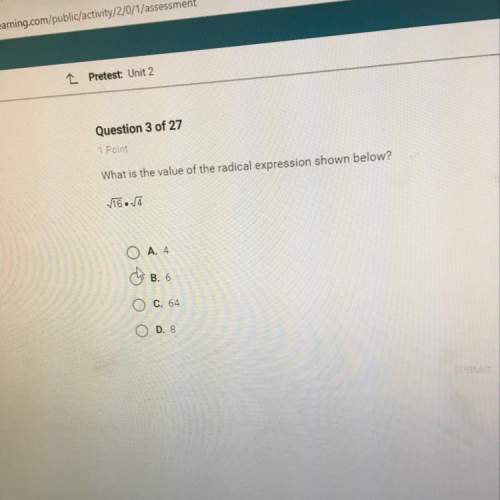
Mathematics, 25.10.2021 09:20 jsilsby
10. A one-tailed hypothesis test with the t statistic
Antisocial personality disorder (ASPD) is characterized by deceitfulness, reckless disregard for the well-being of others, a diminished capacity for remorse, superficial charm, thrill seeking, and poor behavioral control. ASPD is not normally diagnosed in children or adolescents, but antisocial tendencies can sometimes be recognized in childhood or early adolescence. James Blair and his colleagues have studied the ability of children with antisocial tendencies to recognize facial expressions that depict sadness, happiness, anger, disgust, fear, and surprise. They have found that children with antisocial tendencies have selective impairments, with significantly more difficulty recognizing fearful and sad expressions.
Suppose you have a sample of 45 14-year-old children with antisocial tendencies and you are particularly interested in the emotion of disgust. The average 14-year-old has a score on the emotion recognition scale of 13.85. (The higher the score on this scale, the more strongly an emotion has to be displayed to be correctly identified. Therefore, higher scores indicate greater difficulty recognizing the emotion). Assume that scores on the emotion recognition scale are normally distributed.
You believe that children with antisocial tendencies will have a harder time recognizing the emotion of disgust (in other words, they will have higher scores on the emotion recognition test).
What is your null hypothesis stated using symbols?
What is your alternative hypothesis stated using symbols?
This is a tailed test. Given what you know, you will evaluate this hypothesis using a statistic.
Using the Distributions tool, locate the critical region for α = 0.05.
In order to use the t distribution, you will first need to determine the degrees of freedom (df) for α = 0.05. The degrees of freedom (df) is . The critical value of t is .
Your sample of 14-year-old children with antisocial tendencies has an average score of 14.60 with a standard deviation of 2.96.
Calculate the t statistic. To do this, you will first have to calculate the estimated standard error. The estimated standard error is . The t statistic is . (Hint: For the most precise results, retain four significant figures from your calculation of the standard error to calculate the t statistic. Round your final answer to four decimal places, and then round it again to two decimal places for your answer selection.)
The t statistic lie in the critical region. Therefore, you reject the null hypothesis.
Based on the results of this test, there enough evidence to conclude that children with antisocial tendencies have greater difficulty recognizing disgust than do children without antisocial tendencies.

Answers: 3
Another question on Mathematics

Mathematics, 21.06.2019 20:30
Merrida uses a pattern in the multiplication table below to find ratios that are equivalent to 7: 9. if merrida multiplies the first term, 7, by a factor of 6, what should she do to find the other term for the equivalent ratio? multiply 9 by 1. multiply 9 by 6. multiply 9 by 7. multiply 9 by 9.
Answers: 1

Mathematics, 21.06.2019 21:30
Using pert, adam munson was able to determine that the expected project completion time for the construction of a pleasure yacht is 21 months, and the project variance is 4. a) what is the probability that the project will be completed in 17 months? b) what is the probability that the project will be completed in 20 months? c) what is the probability that the project will be completed in 23 months? d) what is the probability that the project will be completed in 25 months? e) what is the due date that yields a 95% chance of completion?
Answers: 3

Mathematics, 21.06.2019 23:10
In which quadrant does the point lie? write the coordinates of the point. a. quadrant ii; (–2, –4) b. quadrant iii; (2, 4) c. quadrant iii; (–2, –4) d. quadrant iv; (–4, –2)
Answers: 3

Mathematics, 22.06.2019 02:00
Two sides of a right triangle measure 2 units and 4 units. what is the area of the square that shares a side with the third side of the triangle?
Answers: 2
You know the right answer?
10. A one-tailed hypothesis test with the t statistic
Antisocial personality disorder (ASPD) is ch...
Questions

English, 11.12.2019 04:31

Mathematics, 11.12.2019 04:31

Mathematics, 11.12.2019 04:31


Spanish, 11.12.2019 04:31

Mathematics, 11.12.2019 04:31


Mathematics, 11.12.2019 04:31




Mathematics, 11.12.2019 04:31



Mathematics, 11.12.2019 04:31




Mathematics, 11.12.2019 04:31

Chemistry, 11.12.2019 04:31




